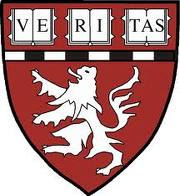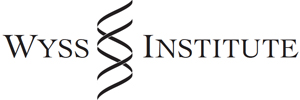Research
in the Molecular Systems Lab


 |
|
|
Overview: Digitally programmable molecular systems and technology We are interested in engineering digitally programmable molecular systems composed of information bearing molecules such as DNA and RNA, and developing technology and applications based on such systems. See details below. P.x refers to Paper x on the publication page. 1. Molecular programming with DNA/RNA We are interested in programming information bearing molecules to demonstrate user-prescribed geometry and dynamics. We have developed frameworks for contstructing user-prescribed structures via programmable self-assembly of DNA bricks (P4, P6, P47, P2, P21) or self-folding of a single strand (P48). Additionally, we can encode sophisticated dynamics in the assembly process, in test tubes (P1, P17) and then in living cells (P22, P41). Besides assembly and folding, we have developed a method for programmable autonomous synthesis of DNA, based on Primer Exchange Reaction (PER) (P45). Unlike dynamic assembly, dynamic synthesis manipulates a covalent bond, is fueled by ATP, and provides a compact and robust platform for programming behavior and for developing applications, e.g. in imaging and sensing. We are broadly exploring its potentials. 2. DNA transforming bioimaging We have been developing DNA probes to transform aspects of biomolecular imaging: 5 nm molecular resolution enabled by DNA-PAINT (P33, P15), precise molecular quantification by qPAINT (P32), rapid sequential multiplexing by DNA-Exchange (P15, P39, P37, P38), high throughput imaging via signal amplification by SABER (P58, P59), and microscope-free imaging via auto-cycling proximity recording (P44). DNA-based imaging thus promises to illuminate biology with new clarity. In particular, we are developing next generation tools for building the molecular atlas of the cell (with a current focus on imaging the 3D chromosome with high genomic and spatial resolution (P50, P55, P26)) and the cellular atlas of the body (especially the brain), and for single molecule and single cell proteomics. Some of these DNA-based imaging tools are being commercialized via a lab spin-off (Ultivue). 3. DNA advancing biosensing We are interested in developing molecular tools for detecting and identifying biomarkers with high sensitivity and specificity. We have developed an ultra-specific toehold probe based on balanced molecular competition for detecting base change in nucleic acid targets (P3), which forms the foundation for a lab spin off (NuProbe). Building on our recent innovation of Autocycling Proximity Recording (APR, P44) and Primer Exchange Reactions (PER, P45), we are developing a variety of molecular robotics devices for inspecting, recording, measuring, and analyzing the molecular environment, including a biochemical DNA nanoscope and an ultra-sensitive wash-free immunoassay. 4. Programming matter from inorganic to biology Although our ongoing work focuses more on utilizing DNA for biomolecular analysis (imaging, sensing, spatial omics, single-molecule proteomics etc.), we maintain an active interest in programing (rather than analyzing) matter. We have developed DNA/RNA-based methods for inorganic material synthesis with prescribed morphology (e.g. casting (P24), etching (P8), coating (P9)), for spatial arrangement of functional moieties (e.g. scaffolding fluorephores into geometric (P5) or intensity (P40) barcodes), for macroscale biomaterial assembly directed by molecular glue (P12), and for constructing synthetic biological circuits in living cells and on paper-based platforms (e.g. conditional translational control with RNA toehold switches (P22, P23) and ribocomputing devices (P41)), and will keep exploring emerging opportunities in the broad space of digitally programmable matter, from inorganic to living. 5. Innovation that matters: broadly focused and appropriately unconstrained Beyond the above topics, we are broadly interested in exploring other innovative ideas, especially unfamiliar ones, but we try to limit our attention to those that actually matter. We attempt to pursue them in a highly focused fashion with a defined mission that can be evolving, but with ever increasing clarity. We try not to remain satisfied with incremental variation, superficial utility or just diffuse curiosity. Our pursuit is often facilitated, but not burdened or restricted, by our domain expertise in programmable molecular systems. While respecting the fundamental limits of physical laws, we aspire not to be constrained by established wisdom, trending taste, apparent problem intractability, or perceived resource (un-)availability. |